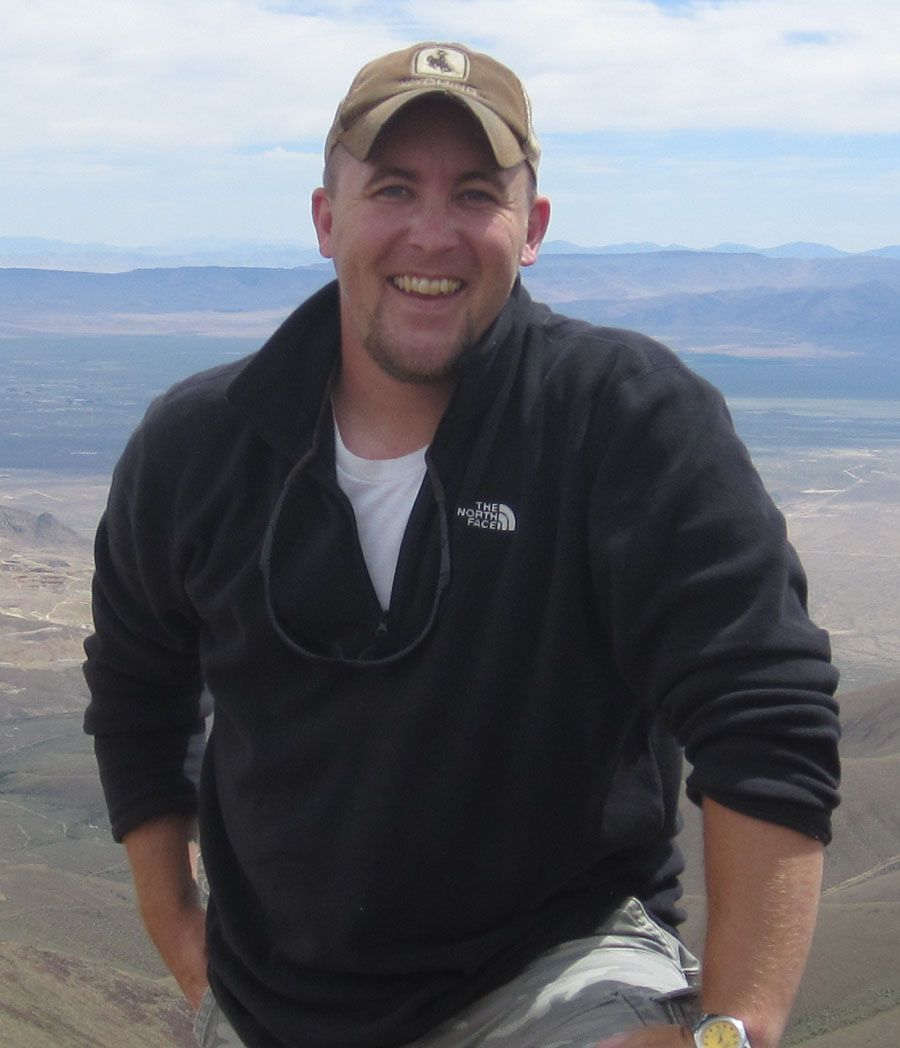Sponsored by: ASARCO LLC

Eocene Hydrothermal Systems and Contrasting Hydrothermal Alteration in the Battle Mountain District, Nevada
by Caleb King and Mark D. Barton
Abst: The Battle Mountain district in north-central Nevada hosts numerous Eocene intrusive centers that have hydrothermal systems, many with associated Cu/Au mineralization. Mineralization types include porphyry-type Cu-Au(-Mo), distal-disseminated Au, and Au ± Cu skarns. These systems contain high-temperature quartz veins, potassic and sericitic alteration, and abundant sodic-calcic, calcic, and potassic-calcic alteration. Most systems, including Copper Canyon, Copper Basin, and Buffalo Valley and the deeply exposed Elder Creek porphyry system, have superimposed features. For these systems, crosscutting relationships, combined with published geochronology and 37 new U-Pb dates, demonstrate that the Au(-Cu) systems are Late Eocene (39-42 Ma). Conversely, mid-Cretaceous magmatism (94-98 Ma) generated porphyry Mo(-Cu) mineralization at Buckingham and Buffalo Valley Moly.
Alteration assemblages in these Eocene systems form distinct zones and were defined by mapping secondary mineral assemblages and by petrographic and electron microprobe studies. Alteration of siliciclastic rocks and igneous rocks in the district includes: potassic alteration (Qz + Bio + Kf ± Rut with Po + Asp + Cpy + Py ± Mt ± Au), sericitic alteration (Qz + Ser + Py with varying amounts of Chl + Asp + Cpy), sodic-calcic alteration (Na-plag + Act + Dio + Chl + Tit + Ep + Ap ± Gar ± Scap, associated with the removal of metals from the host rocks), potassic-calcic alteration (Kspar + Dio + Act + Gar + Ep + Tit + Ap with Cpy + Py + Mt ± Hm; Qz dissolution), and calcic alteration (Ca-plag + Act + Dio + Qz ± Gar with Cpy + Py + Mt ± Hm). Two types of skarn occur in the district. Fortitude-type skarns replace carbonate rocks and consist of Cpx + Gar + Po with Au + Cu mineralization, whereas Copper Basin-type skarns replace feldspathic and silicic as well as carbonate rocks and consist of Gar + Hem + Mt with Au + Cu mineralization.
The volume and distribution of these alteration assemblages, combined with petrologic considerations, indicates two main fluid sources: magmatic fluids generated potassic, sericitic, and Fortitude-type skarns, and moderately saline, non-magmatic fluids produced Na-Ca(-K) alteration mineral assemblages and Copper Basin-type skarns. Those features inferred to be magmatic-hydrothermal are restricted in their extent (ca. 1 km) and related to particular intrusive phases, whereas the Na-Ca-K alteration typically extends over many kilometers and is not correlated to any particular intrusive phase.
In addition to our work at Battle Mountain, reconnaissance and selected new mapping has revealed that other exposed Eocene plutons in northeastern Nevada may contain many analogous features. Many of these plutons exhibit local magmatic-hydrothermal features including potassic (secondary Bi ± Kf) alteration and quartz veins, yet the distinctive Na-Ca-K alteration is remarkably widespread and heretofore, largely unnoted. Observations within the Battle Mountain district and regionally indicate that a variety of fluids – magmatic and non-magmatic – played significant roles in Eocene intrusion-centered hydrothermal systems, and that the consequences of both fluid types, particularly the latter, need to be considered in interpreting Cenozoic metallogeny.
 Bio: Caleb was born and raised in Wyoming, a fourth generation Wyomingite. Growing up in Wyoming led to an interest in geology and anthropology at an early age leading Caleb to pursue both subjects in college beginning in 2001. He attended Western Wyoming Community College in Rock Springs, Wyoming, where he got an Associates of Science degree and had the opportunity to do archaeological work in the south Pacific including three and a half months of work on Easter Island. He then attended the University of Wyoming where he obtained a B.S. in geology and a B.A. in anthropology in 2006. Upon finishing his degrees he went to work in mineral exploration for Newmont on the Sundance project in Wyoming, then DiamonEx Ltd. conducting diamond exploration in the State Line District of Wyoming and Colorado, and then Newmont again working in the Belt Series rocks on the Toboggan project in Idaho. In 2009 Caleb went back to school at the University of Arizona and obtained an M.S. degree in 2011 for his work on the Elder Creek porphyry system at Battle Mountain, Nevada. He then immediately began working on a Ph.D. examining the magmatic history of the Battle Mountain, the associated hydrothermal systems and alteration products, and the Au-Ag-Cu mineral deposits of Eocene age. His graduate research has been sponsored by Newmont, Science Foundation Arizona, and the Lowell Institute for Mineral Resources at the University of Arizona.
Bio: Caleb was born and raised in Wyoming, a fourth generation Wyomingite. Growing up in Wyoming led to an interest in geology and anthropology at an early age leading Caleb to pursue both subjects in college beginning in 2001. He attended Western Wyoming Community College in Rock Springs, Wyoming, where he got an Associates of Science degree and had the opportunity to do archaeological work in the south Pacific including three and a half months of work on Easter Island. He then attended the University of Wyoming where he obtained a B.S. in geology and a B.A. in anthropology in 2006. Upon finishing his degrees he went to work in mineral exploration for Newmont on the Sundance project in Wyoming, then DiamonEx Ltd. conducting diamond exploration in the State Line District of Wyoming and Colorado, and then Newmont again working in the Belt Series rocks on the Toboggan project in Idaho. In 2009 Caleb went back to school at the University of Arizona and obtained an M.S. degree in 2011 for his work on the Elder Creek porphyry system at Battle Mountain, Nevada. He then immediately began working on a Ph.D. examining the magmatic history of the Battle Mountain, the associated hydrothermal systems and alteration products, and the Au-Ag-Cu mineral deposits of Eocene age. His graduate research has been sponsored by Newmont, Science Foundation Arizona, and the Lowell Institute for Mineral Resources at the University of Arizona.